How to design your own Medieval border
When we think of Medieval we may be forgiven for conjured images of jousting, banquets and ladies with coronet hats and streaming ribbons. Of Robin Hood outwitting the Sherif and his men and if you're like me, Paul Bettany reciting poetry!
But there is a wealth of Medieval scripture and artwork that has been shaping and influencing our daily lives for generations. From Biblical scriptures used for public worship, to the extraordinary detail of Medieval tapestries like the Lady and the Unicorn. Here lies some of the most exquisite artwork in existence, much of which resides in private collections in Europe's greatest libraries.
So how do we bring the beauty of Medieval times to the 21st Century?
This week's blog is here to show you just how you can design your very own Medieval border.
The first task is to choose the style you want your border to take. There are four main designs.
Flora and Fauna
The first is to take your inspiration from the flora and fauna of the time. Seen to the right here in our Head Designer, Diz's artwork. This was based on an original Medieval scroll, depicting 'The Author at Work.' You can see how effective using the vine-like quality of irises and roses for example can be used to highlight a central image.
If you are interested in this particular style I would thoroughly recommend the works of Janet Backhouse, a leading authority in the field for many years. She has written extensively on the subject of Medieval scrolls and her books have some simply stunning examples.
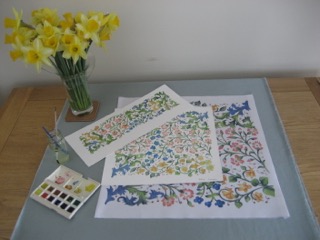
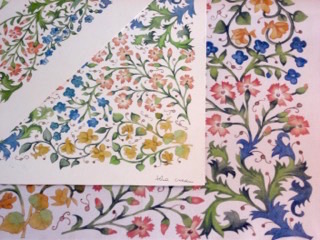
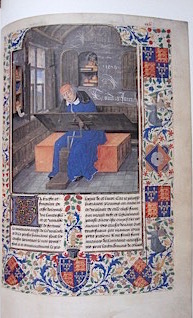
Animal imagery
Animal imagery in Medieval artwork is also very popular, this is especially true of the tapestries of the 1500s. The six senses of the Lady and the Unicorn tapestries are a terrific example of how animal imagery is used as a background to a larger design.
The inclusion of rabbits in particular is fascinating, you really get a sense of the personalities coming through. As a border this can add a light-heartedness to a design, for example, a way of 'spreading the news' of a larger image.
Another alternative, seen in Diz's depiction of a unicorn below, is to include a focus point to your border. By choosing a larger image, in this case a unicorn, for one corner of your border you can bring together some of the flora and fauna examples we've already discussed in a statement image.
Coats of Arms
You can see from the original design of 'The Author at Work' that coats of arms were very common to the religious scriptures of the time.
A popular option for educational institutions, the repetition of the coat of arms or school shield gives a strong sense of identity to a central image and a unique finish to one of our school
tea-towel designs.
Find out more about how you can use your school's history to give your merchandise 'an edge' on our Schools pages.
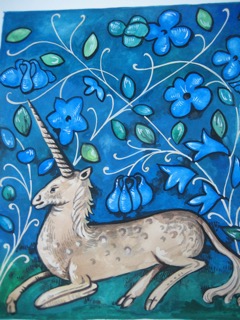
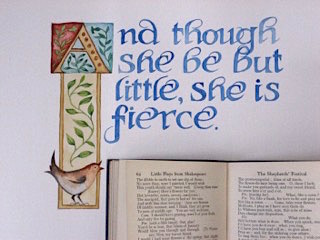
Lettering & Quotations
Lastly but by no means least is possibly the most well-known style used in Medieval design, the use of elaborate lettering or Calligraphy.
Often the first letter in a scroll or text, this intricate design instantly offers the 'wow factor' to any piece of work. Used, as they often were, as celebrations of the word of God, scrolls would be full of extraordinary detail and use luxurious dyes and gold leaf to quite beautiful effect.
Neither digital or screen printing can accommodate the luxury of gold leaf but this example of a Shakespearean quote from A Midsummer Night's Dream shows you how effective a more limited colour pallet can be. In this instance by extending the lettering detail to incorporate vine-work and a song bird.
I hope this has inspired you to bring some Medieval magic to your own border designs. The results you can achieve are truly spectacular. As always our Design Team are on hand with expert advice and happy to offer you a bespoke design service tailored to your specific requirements.
I'm going to round off this week's blog with the words of St Francis of Assisi, as inspiring now as when they were first written many centuries ago.
"Start by doing what is necessary; then do what is possible and suddenly you are doing the impossible."
Happy designing!


